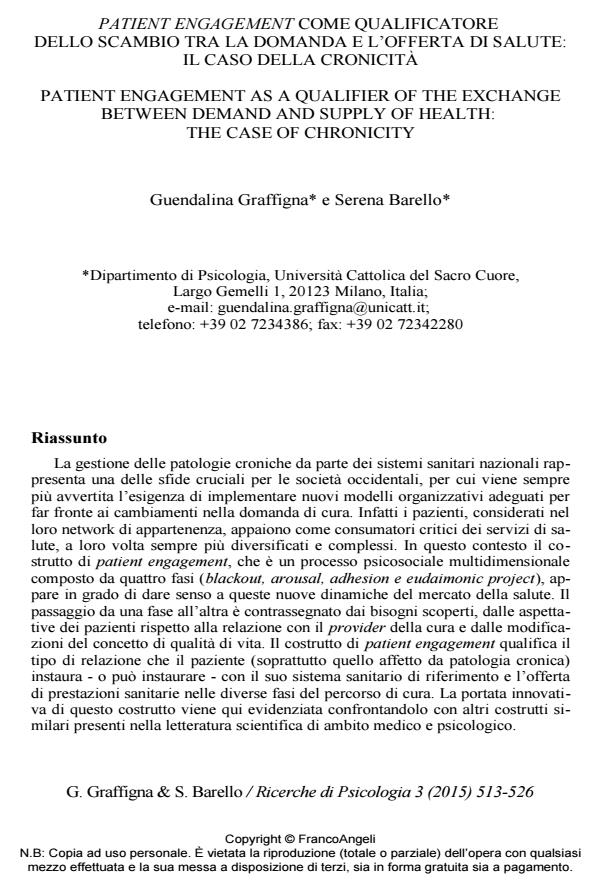Patient engagement as a qualifier of the exchange between demand and supply of health: the case of chronicity
Journal title RICERCHE DI PSICOLOGIA
Author/s Guendalina Graffigna, Serena Barello
Publishing Year 2015 Issue 2015/3
Language Italian Pages 14 P. 513-526 File size 211 KB
DOI 10.3280/RIP2015-003005
DOI is like a bar code for intellectual property: to have more infomation
click here
Below, you can see the article first page
If you want to buy this article in PDF format, you can do it, following the instructions to buy download credits

FrancoAngeli is member of Publishers International Linking Association, Inc (PILA), a not-for-profit association which run the CrossRef service enabling links to and from online scholarly content.
The last decades’ changes in the epidemiological trends of chronic disease for the majority of Western population have introduced important changes in the organization and management of the healthcare systems. Therefore, health systems throughout the world are searching for new and effective ways of making their services more responsive to the new patients and the public health needs and demand. To make people aware of their health services options by supporting them in the decision-making process and to engage them in enacting preventive healthy behavior is crucial to achieve successful health outcomes and reduce healthcare costs. In this paper, we will outline a model that explains the subjective experience patients’ get through to be engaged in their care process and its implication for the patient-doctor relation and for the patient’s quality of life. Moreover, the concept of patient engagement will be discussed in relation to other concepts - such as patient adherence, patient compliance, self-management, patient involvement, patient participation, shared decision-making, and patient activation -traditionally used to denote the active role of patients in their care.
Keywords: Patient engagement, chronic disease, healthcare marketing, communication, quality of life, patient-doctor relation
Guendalina Graffigna, Serena Barello, Patient engagement come qualificatore dello scambio tra la domanda e l’offerta di salute: il caso della cronicità in "RICERCHE DI PSICOLOGIA " 3/2015, pp 513-526, DOI: 10.3280/RIP2015-003005